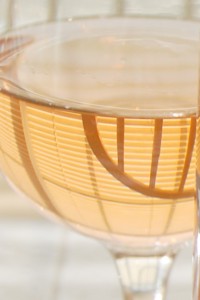 The trees outside are green and lush with only a hint of yellow or orange in the leaves. With my windows open to get a little breeze going, I can hear lawnmowers buzzing in the background, a reminder that I need to mow my own lawn. Just moments ago, an ice cream truck completed a slow circuit of the neighborhood with a few sales to kids eager for an icy treat.
The trees outside are green and lush with only a hint of yellow or orange in the leaves. With my windows open to get a little breeze going, I can hear lawnmowers buzzing in the background, a reminder that I need to mow my own lawn. Just moments ago, an ice cream truck completed a slow circuit of the neighborhood with a few sales to kids eager for an icy treat.
Welcome to autumn in Memphis.
You get used to life in a hot climate, but it presents some challenges for the wine lover and some dangerous pitfalls for the wine novice. On the wine lover side, I take great pleasure in the art of drinking seasonally. Cool, crisp, mineral-driven whites and pale rosés with delicate fruit flavors are what I crave, and I try to cook accordingly. The matching dishes tend to be dominated by fresh vegetables and the meat cooked quickly and simply, in order to avoid making the kitchen any hotter than usual. Personally when it comes to the long smoking required for ribs or pork shoulders, I’ll sit outside in January with a book and just move a little closer to the smoker if I get chilly. Reds are still opened and enjoyed around the city, but I’ve always found that I’ll wait until the late cool of the evening.
Storage presents some issues. With adequate air conditioning and the attendant electrical bills, most bottles will be fine, but in a hotter home or one in which the A/C is off for most of the day, it’s necessary to make use of a wine refrigerator or other insulated storage system to avoid the drastic swings in temperature that can be so damaging.
Wine and the car
Those temperature swings are what most wine novices are not thinking about when the bottle of wine is casually tossed in the trunk of a car during a day of running errands. I’m guilty of this myself. Years ago I picked up two bottles of Chardonnay for a party, carried them in the trunk during August, and for some reason only fetched one of them. Rested on ice for a while, it was decent enough if not spectacular. Just a casual chard that you don’t think about while getting lost in conversation. The other was forgotten for a week during which temperatures topped 100 on the Fahrenheit scale. When I rediscovered it, I decided to let it come to room temperature and taste it.
 I could barely even sniff it. Sour and smelling of rotten peaches, it stung my nose. There were a few tiny elements that I would later recognize from Madeira, which goes through a more controlled heating process with a much better final product. But this inexpensive California Chardonnay would never become a rich fortified wine. It was simply destroyed.
I could barely even sniff it. Sour and smelling of rotten peaches, it stung my nose. There were a few tiny elements that I would later recognize from Madeira, which goes through a more controlled heating process with a much better final product. But this inexpensive California Chardonnay would never become a rich fortified wine. It was simply destroyed.
The car reliance of the region complicates matters, especially since wine is only sold here in separate liquor stores, so when planning for dinner people have to decide if they should buy wine first and then go to the grocery store, or vice versa. And if you’re looking at lettuce that will wilt in a warm breeze versus a bottle of fermented grape juice that’s already a year old, the latter can seem indestructible.
My own solution has always centered around the desire to maintain cool, not cold, temperature stability, whether when running errands in the heat or simply transporting wines to a gathering. I take a few liter bottles of water, let them chill in the refrigerator, and then pack them between bottles of wine in an ice chest. It cuts in half the number of bottles of wine that I can carry, but I’ve found on many occasions that I can maintain a decent cellar-style temperature even outdoors, and I make sure to return partially empty bottles back to the cooler between servings. It’s not my own invention, but between all of the various gadgets and workarounds that exist, it’s the one that I’ve found works best for a lot of situations.
In the meantime, I’ll continue to try to keep my wine stable, and hope that by the Holidays, I’m through with mowing the lawn and can experience the full pleasure of Amarone and Bordeaux and the deep dark flavors of Cahors…

